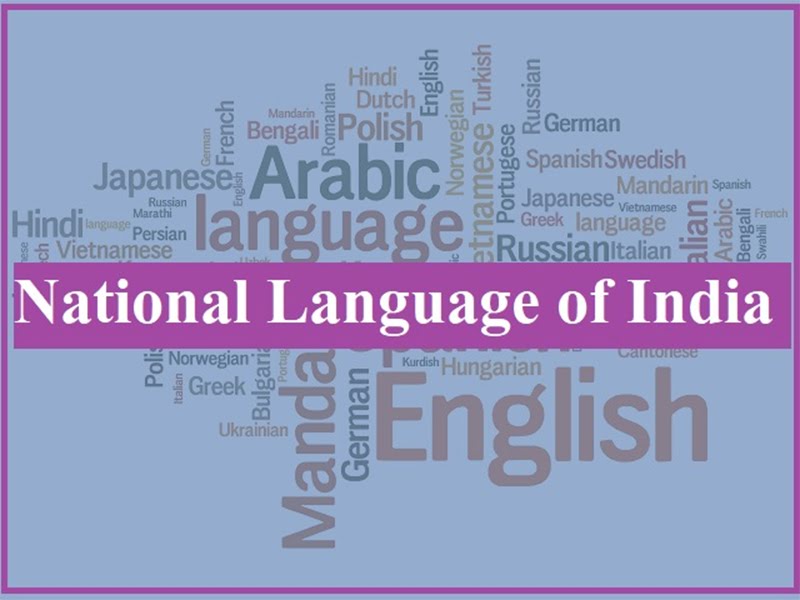No language is designated as the national language in the Indian Constitution. Even though Hindi was made the official language, only 40% of people spoke it, making it difficult for the rest to understand. An official language was chosen over a single national language in recognition of the importance of protecting the country’s diversity. This strategy protects national unity and integrity by avoiding potential conflicts that could arise from favoring one language over the hundreds spoken throughout the country.
National Language of India
The numerous ethnic cultures, languages, and traditions that make up India’s rich tapestry of democratic values have resulted in a vast variety of spoken dialects. India is a federation of numerous entities thanks to its 28 states and 8 union territories. This diversity is reflected in the linguistic landscape, which is frequently referred to as “Water changes every mile, speech changes every mile,” with linguistic nuances varying even over short distances. The issue of India’s national language and official language frequently comes up, which prompts discussions to fully address these concerns.
Also Check:-
Bravest Freedom Fighters of India
National Language of India in Constitution
Although Hindi written in the Devanagari script is listed as the national language in the Indian Constitution, no language is listed as the nation’s official language. However, English can also be used for official purposes for a period of fifteen years following the Constitution’s implementation. After that, Parliament has the option of altering or maintaining Hindi alongside English. As a result, official work in India is conducted in both Hindi and English.
Official Language of India
It also stated that official work would continue to be conducted in English until January 25, 1965. However, English is still utilized in conjunction with Hindi for official purposes because it was not possible to completely switch to Hindi at that time. The Indian government’s official languages were further defined by the Official Language Act of 1963 for use in Parliament, the Central and State Acts, and the High Courts.
Also Check:-
Official Language of India State Wise
According to the Eighth Schedule of the Indian Constitution, one or more languages are designated as the official scheduled languages of each state in India. These languages are used for government communication, judicial proceedings, and other official purposes in their respective states. The 28 Indian states and their respective official languages are listed in the table below:
| Official Language of India State Wise | ||
| State | Official Languages | Other Spoken Languages |
| Andhra Pradesh | Telugu | Telugu, Urdu, Hindi, Tamil, Marathi |
| Arunachal Pradesh | English | Nishi, Adi, Bengali, Nepali, Hindi |
| Assam | Assamese | Assamese, Bengali, Hindi, Bodo, Nepali |
| Bihar | Hindi | Hindi (Bhojpuri, Magadhi), Maithili, Urdu |
| Chattisgarh | Hindi | Hindi (Chhattisgarhi), Odia, Bengali, Telugu, Marathi |
| Goa | Konkani | Konkani, Marathi, Hindi, Kannada, Urdu |
| Gujarat | Gujarati | Gujarati, Hindi, Sindhi, Marathi, Urdu |
| Haryana | Hindi | Hindi (Haryanvi, Mewati), Punjabi, Urdu, Bengali, Maithili |
| Himachal Pradesh | Hindi | Hindi, Punjabi, Nepali, Kashmiri, Dogri |
| Jharkhand | Hindi | Hindi (Bhojpuri, Magadhi, Nagpuri), Santhali, Bengali, Urdu, Odia |
| Karnataka | Kannada | Kannada, Urdu, Telugu, Tamil, Marathi |
| Kerala | Malayalam | Malayalam, Tamil, Tulu, Kannada, Konkani |
| Madhya Pradesh | Hindi | Hindi, Marathi, Urdu, Sindhi, Gujarati |
| Maharashtra | Marathi | Marathi |
| Manipur | Meitei (Manipuri) | Manipuri, Nepali, Hindi, Bengali |
| Meghalaya | English | Khasi, Garo, Bengali, Nepali, Hindi |
| Mizoram | Mizo, English, Hindi | Mizo, English, Hindi, Manipuri, Chakma |
| Nagaland | English | Ao, Konyak, Angami, Sema, Lotha |
| Odisha | Odia | Odia, Bengali, Telugu, Hindi, Santali |
| Punjab | Punjabi | Punjabi, Hindi |
| Rajasthan | Hindi | Rajasthani, Hindi |
| Sikkim | English | Bhutia, Hindi, Nepali, Lepcha, Limbu |
| Tamil Nadu | Tamil | Tamil, Telugu, Kannada, Urdu, Malayalam |
| Telangana | Telugu | Telugu, Urdu, Marathi, Kannada, Hindi |
| Tripura | Bengali, English, Kokborok | Bengali, Tripuri, Manipuri, Kokborok |
| Uttar Pradesh | Hindi | Hindi (Awadhi, Bhojpuri, Braj Bhasha, Khari Boli dialects) |
| Uttarakhand | Hindi | Hindi (Garhwali, Kumaoni, Jaunsari dialects) |
| West Bengal | Bengali | Bengali |
Difference between the National & Official Language of India
The roles that each play determine the distinction between a nation’s official language and its national language. A nation’s identity and heritage are reflected in its national language, which is linked to its sociopolitical and cultural functions. The official language, on the other hand, is primarily associated with government activities like parliamentary proceedings and legal matters. The crucial function of representing the nation and its citizens on a variety of platforms is accomplished by using either the official or national languages.
Also Check:-
Bigg Boss OTT 3 Contestants List
Final Words
Hindi and English serve as the official languages of government communication in India, despite the country’s lack of a single national language. 22 scheduled languages are included in the 8th Schedule of the Indian Constitution, demonstrating the country’s linguistic diversity. This list has been expanded to include Sindhi, Konkani, Manipuri, Nepali, Bodo, Dogri, Maithili, and Santhali, demonstrating India’s commitment to cultural preservation and inclusion. In India’s diverse landscape, these languages are essential for fostering unity and facilitating communication.
